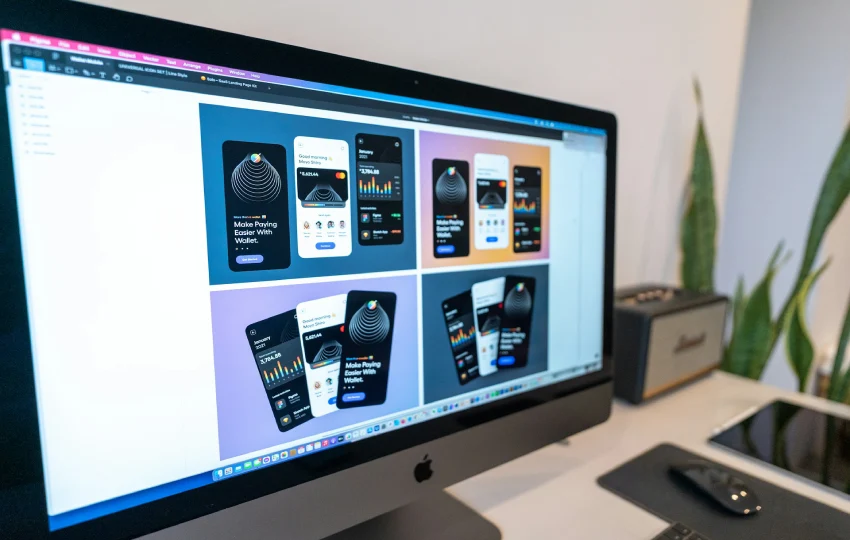User Experience (UX) Design plays a crucial role in the rapidly evolving digital technology landscape. It shapes how we interact with digital products and services, ensuring they are seamless, efficient, and enjoyable. But what exactly is UX design, and why should it matter to us, particularly in the context of education? Let’s dig deeper into this topic and explore its significance, especially considering the UX@School European project.
Understanding UX Design
UX Design creates products, systems, or services that offer meaningful and relevant experiences to users. This process covers the entire journey of acquiring and integrating a product, including branding, design, usability, and functionality. UX designers aim to enhance user satisfaction by improving usability, accessibility, and pleasure in the interaction between the user and the product.
Think of UX design as orchestrating a symphony. Each instrument (or design element) must work harmoniously to create a beautiful experience for the listener (or user). If one instrument is out of tune, it disrupts the entire performance, just as a poorly designed feature can ruin the user experience.
Key Elements of UX Design
- Usability: Usability stands as the cornerstone of UX design. It refers to how easy and intuitive it is for users to interact with the product. High usability means a product is straightforward, efficient, and user-friendly.
- Accessibility: UX designers ensure digital products are accessible to everyone, including people with disabilities. This includes designing for screen readers, providing alternative text for images, and ensuring all users can navigate the product effectively.
- Aesthetics: While functionality is key, a product’s visual appeal also plays a significant role in user experience. A visually pleasing interface enhances user satisfaction and engagement.
- Functionality: Beyond looking good, the product must work well. It should meet the user’s needs and provide the necessary features without complexity.
- Interaction Design: This aspect involves designing a product’s interactive elements. It focuses on creating a dialogue between the user and the product and ensuring smooth and intuitive interactions.
Why UX Design Should Matter to Us
Enhances User Engagement
In today’s digital age, the success of any product or service hinges on user engagement. A well-designed user experience significantly enhances user engagement by making interactions more enjoyable and fulfilling. Users who find a product easy to use and aesthetically pleasing engage with it regularly and recommend it to others.
Improves Accessibility and Inclusivity
UX design does more than create visually appealing products; it also makes them accessible to everyone. By focusing on accessibility, UX designers ensure digital products serve diverse populations and meet the needs of all users, including those with disabilities.
Boosts Efficiency and Productivity
Good UX design streamlines processes and reduces users’ time to accomplish their goals. Minimizing unnecessary steps and simplifying complex tasks improves efficiency and productivity in personal and professional settings.
Builds Trust and Loyalty
A positive user experience builds trust and loyalty among users. When a product consistently meets or exceeds user expectations, it fosters a sense of reliability and trust. Users remain loyal to a brand or service that consistently provides a good user experience.
Connecting UX Design with Education: The UX@School Project

The importance of UX design becomes even more pronounced in the context of education. The UX@School project, a European initiative, exemplifies this connection. The project enhances the role of teachers and trainers in designing student-centered digital environments, activities, and materials. By leveraging these design principles, the project aims to improve engagement and effectiveness in distance learning.
Objectives of the UX@School Project
- Strengthen Teachers’ Roles: The project empowers teachers and trainers by providing them with the skills and tools to create effective digital learning environments. This includes training in UX design principles to better understand and meet students’ needs.
- Improve Digital Literacy: One of the project’s objectives is to enhance teachers’ digital literacy skills. By understanding and applying UX design principles, teachers create more engaging and effective digital learning experiences for their students.
- Promote Digital Transformation: The project aligns with broader program priorities to facilitate digital transformation in education. Integrating UX design principles into educational practices supports the shift toward more innovative and effective digital learning solutions.
Why UX Design Matters in Education
Enhances Student Engagement
Just as UX design enhances user engagement in commercial products, it significantly improves student engagement in educational settings. User-friendly and visually appealing digital learning environments make learning more enjoyable and less intimidating for students.
Personalizes Learning Experiences
UX design allows educators to create personalized learning experiences. By understanding each student’s unique needs and preferences, educators design digital learning materials that cater to individual learning styles and paces.
Facilitates Remote Learning
Effective remote learning environments have become crucial due to global events that have shifted much of education online. UX design ensures these digital platforms are accessible, intuitive, and engaging, making remote learning a viable and effective alternative to traditional classroom settings.
Supports Teachers
Projects like UX@School equip teachers with UX design skills, enabling them to create better digital learning tools and environments. This improves the learning experience for students and makes the teaching process more efficient and rewarding for educators.
Conclusion
UX design is vital to creating effective, engaging, accessible digital products. Its significance extends beyond commercial applications, crucial in fields like education. The UX@School project highlights the importance of integrating UX design principles into educational practices to enhance student engagement and improve learning outcomes. As we continue navigating the digital age, UX design principles will be essential in creating user-centered, effective, and inclusive digital environments.
For more information on the UX@School project and its objectives, visit here.

